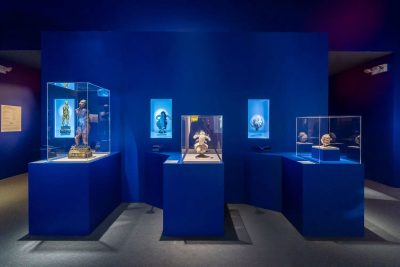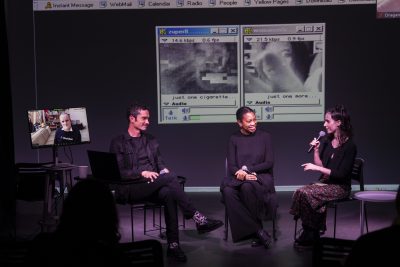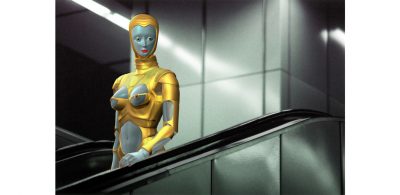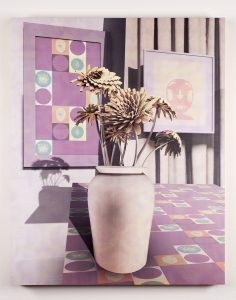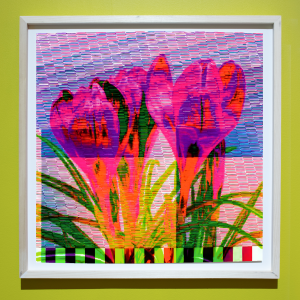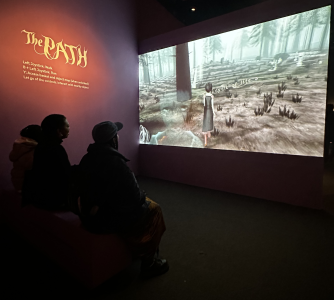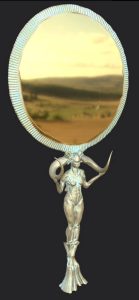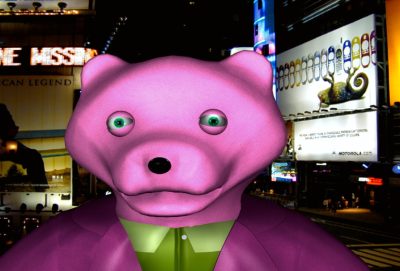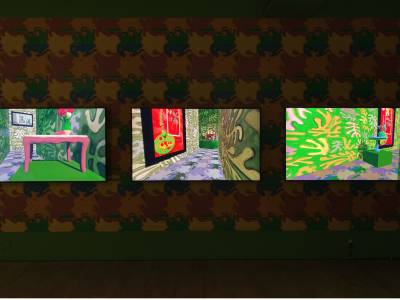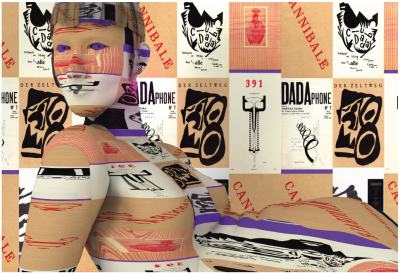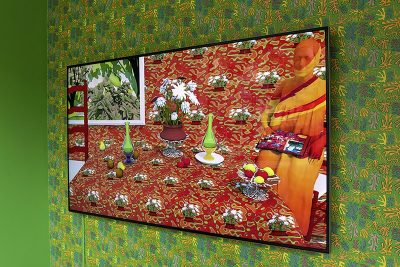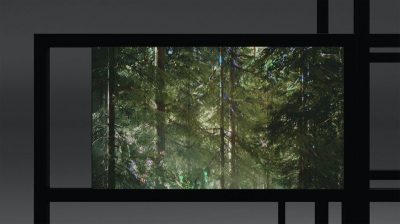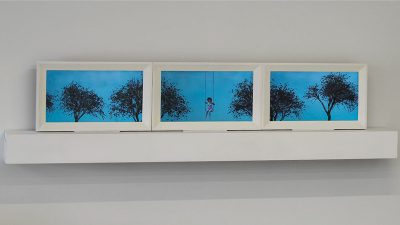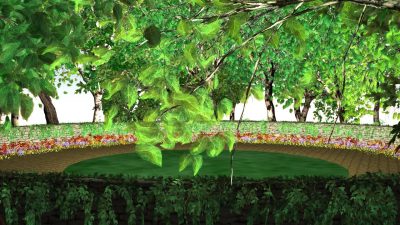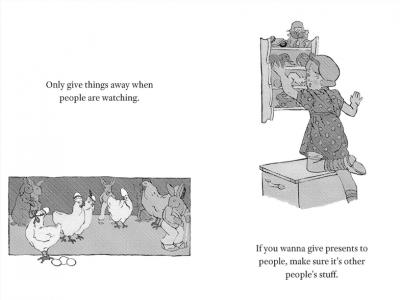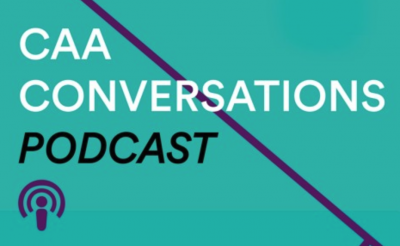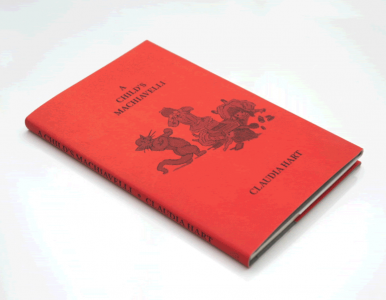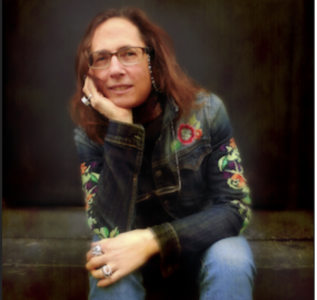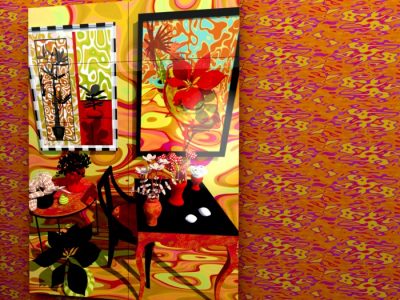bitforms presents the San Francisco debut of Digital Combines, curated by Claudia Hart and including works by Mark Dorf, Hart, Auriea Harvey, Gretta Louw, LoVid, Will Pappenheimer, and Daniel Temkin. Join us for an artist talk, Saturday, April 23 at 4:30 PM, as Claudia Hart, Will Pappernheimer, and Daniel Temkin discuss the impact of NFTs on the broader digital art community and their own personal practices. Opening reception to follow.
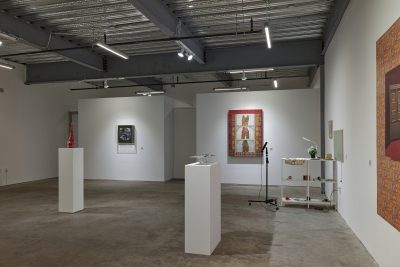
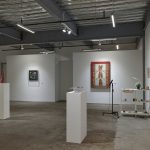
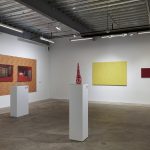
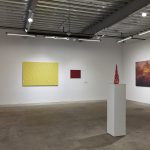



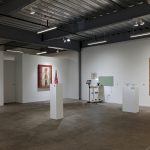
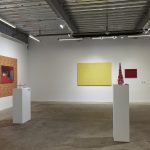

Digital Combines
Curated by Claudia Hart
bitforms presents the San Francisco debut of Digital Combines, curated by Claudia Hart and including works by Mark Dorf, Hart, Auriea Harvey, Gretta Louw, LoVid, Will Pappenheimer, and Daniel Temkin. Join us for an artist talk, Saturday, April 23 at 4:30 PM, as Claudia Hart, Will Pappernheimer, and Daniel Temkin discuss the impact of NFTs on the broader digital art community and their own personal practices. Opening reception to follow.
Claudia Hart appropriates the term “combines” from Robert Rauschenberg to propose a new genre, the “digital combine,” a reference to the unification of a physical and virtual object. Rauschenberg’s radical version of expanded painting unites sculptural and painted elements together in single works. In a parallel construction, Digital Combines links tangible materials with a related digital file stored in the cloud. Exhibited artists present their singular understanding of a digital combine through expanded media: each physical work includes a digital component—ie. 3D models, images, video, sound—made visible by scanning a corresponding QR displayed next to the artwork. While conceived with digital processes, the presented works’ discursive transition of born-digital components to corporeal space explores the nuance between the abstract and the figurative, the digital and the analog.
Although imagined by Hart for a series of her own work, the artist’s combines suggest a single conceptual object that conceives of physical and virtual space as continuous. Digital Combines implements NFTs as framing devices; blockchain registration connects an artwork to a non-fungible token and the token is attached to a smart contract that defines the artwork’s parameters and artistic terms. The Digital Combines agreement, developed in collaboration with time-based media specialist Regina Harsanyi, attaches to an artwork’s blockchain registration:
Each of Hart’s works consists of two components: a born-digital image derived from the physical Digital Combine painting plus the physical painting. These two cannot be sold separately, as they are two halves of a singular whole. Separation of the parts compromises the integrity of the work and, in the event of their separation, Hart will no longer recognize this iteration as her own. In an inversion of platonic idealism, Hart’s commentary interweaves the problematics of representation through virtual simulation versus the history of representation through physical embodiment.
-Excerpt from Digital Combines contract
Hart presents Digital Combines as a figure of speech and a poetic proposition, which, in its performative language, represents a profound ontological shift in our cultural imagination that reframes notions about reality and truth.
Mark Dorf is a New York-based artist whose practice utilizes photography, video, digital media, and sculpture. In his most recent work, Dorf is influenced by human’s perceptions of and interactions with digital domains, urbanism, design, and what we once called “Nature”. Rather than seeing these subjects as categorically different, Dorf looks to reveal the entanglement of these spaces, shedding light on their deep interaction and co-production of one another. With an interest in post-anthropocentric and new materialist theory, he scrutinizes the influence of the information age to better understand his curious position within the 21st century world. Dorf has exhibited internationally at Alabama Contemporary Arts Center, Mobile, AL, 2020; Foam Photography Museum, Amsterdam, NL, 2020, 2017; Les Rencontres d’Arles, Arles, FR, 2019; Frankfurter Kunstverein, Frankfurt, DE, 2018; Postmasters Gallery, New York, 2017, 2015; Division Gallery, Toronto, 2015; The Lima Museum of Contemporary Art, Lima, 2014; Mobile World Centre, Barcelona, 2014; and SCAD Museum of Art, Savannah, GA, 2013 amongst many others. Dorf’s work is included in the Foam Photography Museum Permanent Collection, the Fidelity Investments Collection, the Deutsche Bank Collection, and the permanent collection of the Savannah College of Art and Design amongst others.
Claudia Hart emerged as part of a generation of ‘90s intermedia artists examining issues of identity and representation. Since the late ‘90s when she began working with 3D animation, Hart embraced these same concepts, but now focusing on the impact of computing and simulation technologies. She was an early adopter of virtual imaging, using 3D animation to make media installations and projections, and later as they were invented, other forms of VR, AR, and objects produced by computer-driven production machines. At the School of the Art Institute of Chicago, where she is a professor, she developed a pedagogic program based on her practice – Experimental 3D – the first dedicated solely to teaching simulations technologies in an art-school context.
Hart’s works are widely exhibited and collected by galleries and museums including the collections of the Whitney Museum of American Art, the Museum of Modern Art, and the Metropolitan Museum. Her work has been shown at the New Museum, produced at the Eyebeam Center for Art + Technology, where she was an honorary fellow in 2013-14, at Pioneer Works, NY, where she a technology resident in 2018, and at the Center for New Music and Audio Technology, UC California, Berkeley where she is currently a Fellow. She is represented by bitforms gallery.
Auriea Harvey is a visual artist living and working in Rome, Italy. A pioneering net artist and video game designer, she creates simulations and sculptures that bridge physical and digital space. She has exhibited her hybrid-media sculpture and works on paper with: bitforms gallery, NYC; Transfer gallery; Feral File; Steve Turner gallery, LA; MEET Digital Culture Center, Milan; and König gallery, Berlin. Her digital sculpture recently sold at Christie’s curated NFT auction. The artist’s work can be found in the permanent collections of the Walker Art Center, San Francisco Museum of Modern Art, the RF.C NFT collection, and Rhizome’s Net Art Anthology. Her video games and VR works have had international success, including exhibitions at the Tinguely Museum, Basel; the Victoria & Albert Museum, London; the New Museum, New York; and ZKM, Karlsruhe. She is represented by bitforms gallery, NYC.
Gretta Louw is a South African-born Australian artist, writer, and curator. Her practice investigates the tensions between sensuality and efficiency; craft and automation; constant digital connectedness and corporeal dislocation: in short, the technosphere and the biosphere. Louw graduated from the University of Western Australia in 2002, subsequently living in Japan and New Zealand, before moving to Germany in 2007. Her work has been exhibited widely in public institutions and galleries such as the Wro Media Art Biennale 2021 (PL), Kunstmuseum Solothurn (CH), Münchner Stadtmuseum (DE), National Portrait Gallery (AUS), Furtherfield (UK), LABoral (ESP), and Galeri Nasional Indonesia (IDN). She has received awards including an Australia Council Career Development Grant (2019), a Visual Art Prize from the Cultural Department of the City of Munich (2019), the Bahnwärter Stipendium by the City of Esslingen am Neckar (2017), and the Heinrich Vetter Preis of the City of Mannheim (2014), amongst others.
Louw has curated thematic exhibitions at museums including the Villa Merkel (DE), Furtherfield Gallery (UK), and Paul W. Zuccaire Gallery (US) and contributed essays to numerous catalogues and publications. Her artwork and curatorial projects have been covered by press outlets including Hyperallergic, Kunstforum, Motherboard, AQNB Magazine, Süddeutsche Zeitung, and others. She currently lives and works in Germany.
Collaborating since 2001, LoVid’s work has been exhibited internationally including among others at Honor Fraser Gallery, Postmasters Gallery, And/Or Gallery, Klaus von Nichtssagend Gallery, Real Art Ways CT, BRIC, Elizabeth Foundation for the Arts, Mixed Greens Gallery, The Science Gallery Dublin, The Jewish Museum, Daejeon Museum, Smack Mellon, Netherland Media Art Institute, New Museum, and ICA London. LoVid has performed in venues including: The Parrish Museum, Issue Project Room, Agnes River to River Festival, Lampo Chicago, Tectonics Festival TLV, Museum of Moving Image, MoMA, The Kitchen, Siskel theater Chicago, and International Film Festival Rotterdam. LoVid’s projects have received awards, residencies, and grants support from: Wave Hill, NY Hall of Science, The Robert Rauschenberg Foundation, Graham Foundation, UC Santa Barbara, Signal Culture, Cue Art Foundation, Eyebeam, Harvestworks, Wave Farm, Rhizome, Franklin Furnace, Turbulence.org, New York Foundation for the Arts, Lower Manhattan Cultural Center, Experimental TV Center, NY State Council of the Arts, and Greenwall Foundation. LoVid’s works have been reviewed at Art in America, New Yorker, Bmore Art, Hyperallergic, Garage, and NYLON, and published among others in Handmade Electronic Music (third edition), Emergence of Video Processing Tools, PAJ (Journal for Performance And Art), Maker Magazine, Leonardo Music. LoVid’s videos are distributed by EAI and their NFTs are represented by Postmasters Blockchain.
Will Pappenheimer is a Brooklyn based artist working in new media, performance and installation with an interest in spatial intervention and the altered experiences of the artwork as site. His current work explores the collage of the virtual and physical worlds in the recent medium of “mixed reality.” He is a pioneer of augmented reality (AR) art and a founding member of the AR collective, Manifest.AR formed in 2011. His projects and performances have been shown internationally at Whitney Museum of American Art, LACMA, Los Angeles; San Francisco MOMA; Stedelijk Museum in Amsterdam; FACT, Liverpool, UK; Contemporary Istanbul Art Fair, Istanbul; Fringe Exhibitions in Los Angeles; the ICA, CyberArts Gallery and the Museum of Fine Arts in Boston; the Corcoran Gallery of Art in Washington; Xi’an Academy of Art Gallery in China; the New Museum and the 2017 Moving Image Art Fair in New York. He recently debuted a solo show of new mixed reality sculptural works at the Alpha Gallery in Boston. The artist’s works have been reviewed in the Whitney Museum curator, Christiane Paulʼs recent historical editions of “Digital Art,” a chapter of Gregory Ulmerʼs theoretical book “Electronic Monuments,” Art in America, New York Times, Hyperallergic.org, WIRED, Modern Painters, the Boston Globe, EL PAIS, Madrid, Liberation, Paris, and Art US. A documentary on his work is as part of Bloomberg TV’s Art + Technology series. He teaches new media at Pace University, New York.
Daniel Temkin makes photography, programming languages, net art, and paintings examining the clash between systemic logic and human irrationality. Temkin has written about code and programming languages as an art form for publications like Hyperallergic, and in many academic journals including Leonardo and World Picture Journal, as well as his blog esoteric.codes, which brings together work by artists, writers, and hacker/hobbyists who challenge conventional notions of computing, connecting work that resonate conceptually but emerge across very different disciplines and communities. It won the 2014 ArtsWriters.org grant from Creative Capital and the Warhol Foundation, has been exhibited at ZKM and written in residence at Signal Culture and at the New Museum’s New Inc incubator. He has spoken on this subject at the New Museum, and many conferences, including SIGGRAPH, SXSW, and Media Art Histories.
He received his MFA from the International Center of Photography / Bard College. Group exhibitions include Open Codes at ZKM, TRANSFER Download at Thoma Foundation, xCoAx at Museu do Chiado, Dumbo Arts Fest (where his work was projected on the Manhattan Bridge), Future Isms at Glassbox Gallery. His work has been a critic’s pick for Art News, the New York Times, and the Boston Globe.
